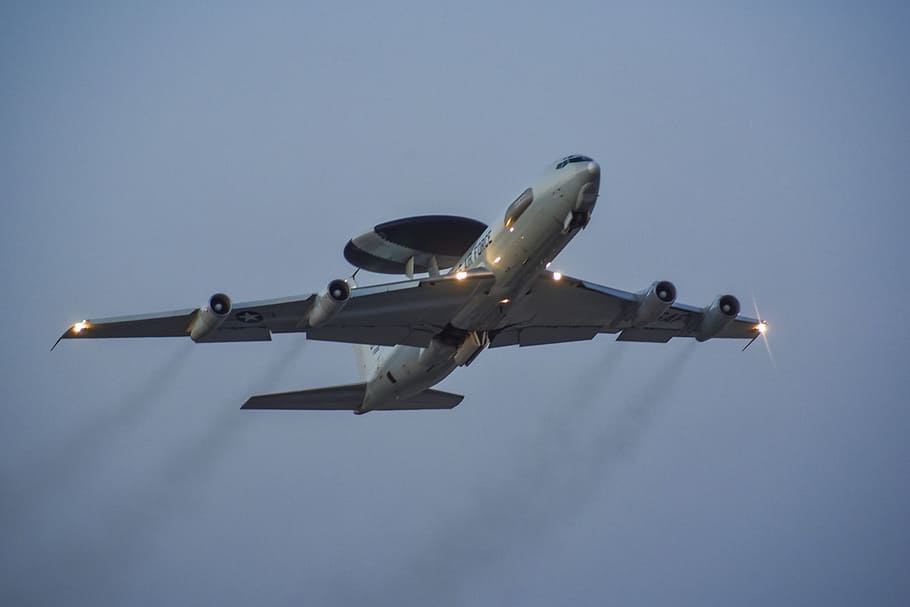With an aggressive China overlooking on the Line of Actual Control (LAC) in eastern Ladakh, India’s latest acquisition are two more Phalcon’s Airborne Warning and Control System (AWACS) aircraft from Israel. On one hand, while the push from Israel expediated the long-stalled deal to sell AWACS to India, it had earlier refused to sell the system to China.
Two Russian Warships Arrive In Sri Lankan Port of Hambantota
According to Harinder Mishra, a journalist living in Jerusalem, the long-stalled deal is a part of a $2 billion worth purchase agreement between India and Israel which includes plans to jointly manufacture arms supplies and defense equipment.
While talking to BBC, he said that Israel has been pushing New Delhi to finalize the deal because the delay leads to a further increase in its price.
Despite All The Threats, Why Is China Wary Of Invading Or Even Intimidating The Philippines?
Mishra asserted that it is irrational to associate the purchase with India-China tension. He added that three AWACS given to India is monitoring the airspace of Pakistan and they can see the land of Islamabad and Rawalpindi at this time. “Under these circumstances, it can be estimated where the next two AWACs will be deployed.”
Israel-China AWACS Deal
Two decades ago, the US pressured Israel to scrap the AWACS deal because the spy plane would give China a strategic advantage over America’s AWACS aircraft in any conflict over Taiwan. This acted as a major dent in Israel-China ties.

China’s interest in Israel is strategic given the fact that the Jewish state is one of the world’s foremost commercial, food, and security technology powerhouses and one of the few foreign countries to command significant grassroots support in the US.
However, Israel cannot afford to weaken its ties with the US as it is a powerful support to the annexation of the West Bank.
India’s Need For AWACS
According to S. Alex Philip, India first felt the need for AWACS during the air battle with Pakistan on February 27, 2019.
Despite All The Threats, Why Is China Wary Of Invading Or Even Intimidating The Philippines?
Following the Balakot last year when Indian warplanes crossed the border and dropped bombs in the vicinity of the town of Balakot in Pakistan, the very next day, Pakistan tried to target military installations but was repulsed. Pakistan, which operates about 10 AWACS, took advantage of the system and succeeded in downing the Indian MiG-21 Bison in aerial combat besides capturing Indian Air Force (IAF) pilot Abhinandan Varthaman, who was handed over to India on March 1, 2019.
Now the deal has finally received a green signal from India’s Cabinet Committee on Security (CCS). The new PHALCON radar is going to be mounted on the Russian A-50 aircraft but will take two to three years for the delivery of the complete system.
Two Russian Warships Arrive In Sri Lankan Port of Hambantota
Also termed as the Airborne Early-Warning and Control (AEW&C) aircraft, the AWACS are key systems of modern warfare as they can detect and track incoming fighters, cruise missiles, and drones much before ground-based radars, direct friendly fighters during air combat with enemy jets.
They also keep tabs on enemy troop build-ups and movement of warships. India’s current possession of AWACS consists of three Phalcon AWACS, with a 400-km range and 360-degree coverage, and two indigenous “Netra” AEW&C aircraft, with indigenous 240-degree coverage radars with a 250-km range fitted on smaller Brazilian Embraer-145 jets.
Chinese AWACS
The Chinese AWACS include four Kong Jing-2000 (KJ-2000), four KJ-200, and two KJ-500 in the People’s Liberation Army Air Force (PLAAF) as per Military Balance 2017. The PLA Navy has its own small fleet of AEW aircraft on the Y-8/Y-9 platform.
According to Grp Captain RS Chhatwal, Chinese AWACS use Active Electronically Scanned Array (AESA) technology which is more advanced than the technology used in AWACS built by the US and Russia.
“Against the PLAAF’s ten AWACS/AEW aircraft, the IAF has three AWACS with two more in the pipeline. In addition, the IAF has inducted one Embraer EMB-145 AEW&C in February 2017 and has two more in the pipeline. The rectangular dual side airborne radar on this aircraft has been developed indigenously by Defence Research and Development Organisation (DRDO) and is similar to China’s KJ-200,” he wrote comparing the Chinese and Indian AWACS capabilities.
Two Russian Warships Arrive In Sri Lankan Port of Hambantota
However, the acquisition of the AWACS is well-timed with the Indian Army preparing for a long haul at the LAC with China in Eastern Ladakh. The two nations have been at loggerheads ever since the deadly Galwan valley clash which resulted in the killing of 20 Indian soldiers and unconfirmed numbers on the Chinese side.
He further added that both the Chinese and Indian AWACS will suffer performance limitations in the mountains since undulations in the terrain will create detection problems for aircraft masked behind the hills.
“The laws of physics are universally applicable and requirement of Line of Sight condition has to be met for radar pick up.” Another limitation in the mountainous terrain at the LAC will due to terrain masking, AWACS may not be able to pick up any attackers heading towards it and the attackers can easily launch sneak attacks taking advantage of hill shadows in the area.